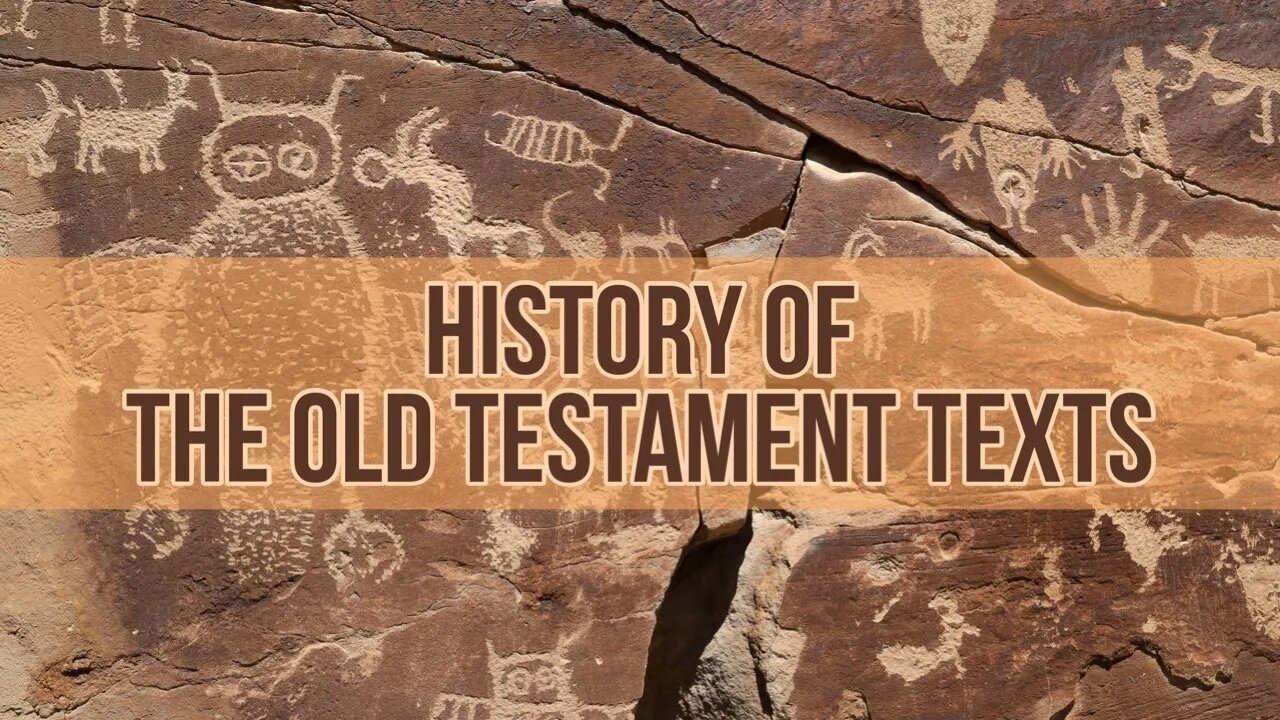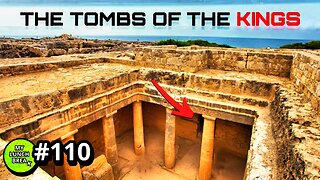Premium Only Content

History of the Bible- Part 1- History of the Old Testament Text - Why the King James Bible only?
#historyofthebible #whythekingjamesbibleonly? #historyoftheoldtestementtext #oldtestament #isthebiblecorrupted #thisweekintheword
Welcome to This Week in the Word!
This is where I am sharing the work God is using to grow me. How I am preparing for his calling on my life, and being a witness to his glory. I am not a graduate of seminary, a theologian, or godly scholar. I am just a born again BIBLE believing disciple of Jesus.
My mission is to encourage people to seek God through reading his word.
This weeks study:Is the Bible Corrupt? (Part 6) Bible History, the old testament:
Opening:
My goal is not to argue with the scoffers who’s hearts are hardened to God’s truth. I am looking to inform believers and others who are seeking truth, specifically the truth of God. These 3 positions should be enough to not only establish you in the correct word of God but also give you knowledge to help teach others and defend your position on a number of fronts so that you will not soon be shaken in your beliefs.
Faith Position: we have already covered this in the first 5 videos of this series. I believe the King James is the word of God in the English translation because of what the Bible says. I don’t put my faith blindly in this book. I have studied it out and trust the words of God more than the words of man.
Historical position: I want to make sure to give the disclosure that man did nothing to write or preserve God’s word other than being God’s instrument. 2TIm 3:16, Psa 12:7 You will quickly see a theme where every thing boils back to 2 lines, one from God’s people, and one from Egypt.
Difference Position: We have not done so yet but at the ending of this series we will look at the differences between the different versions, which is a very compelling case study showing the King James to be the true word of God in English today.
Two families of “text”:
Masoretic Text (MT):
This is where the attacks begin.
“Oldest is best”:
“Errors in translation”:
“Missing books of the Bible”: t
“Changes in Prophecy and Doctrine”:
Septuagint Text (ST):
Type of paper: keep in mind the “paper” of old isn’t paper as we know it today
Papyrus: this was a plant based paper invented in 3000 BC by the Egyptians. Papyrus has a tendency to crack so it wasn’t folded, but rolled as a scroll. This was the most popular from of writing material until 2nd century AD. Papyrus isn’t durable and decomposed fairly quickly especially in the moist climates of Europe rarely able to last 200 years. The oldest pieces of papyrus in the world today are less than 1000 years old and they are fragments.
Parchment: AKA Vellum- this was made from animal skins, invented in Pergamum around 197-159 BC. Parchment was much more durable than Papyrus, and was able to be folded. This paper can last hundreds of years. The oldest parchment in the world is 1500 years old.
The last book of the Bible was penned as late as 96 AD. This means all originals are gone. The paper used in the world when the Bible was written could not have survived to today so at best what could have survived is a copy.
The work of a scribe: a scribe is a person who’s whole life is dedicated to making copies of written documents. This was how books were published prior to the invention of the printing press. The jewish scribes of old were considered to be an elite occupation, on par with doctors, lawyers, government officials, and judges. It was a occupation that required extended schooling.
Method of copies:
All materials they used required purity so before they could start they would clean their tools, instruments, and workspace. This includes physical cleaning as well as spiritual cleaning.
The ink used must be black and made by them from a secret recipe
Each written column can not have less than 48 lines, and can’t be more than 60 lines.
They must say each word out loud while they are writing it.
They must clean the pen, and wash their entire body before writing the most holy name of God, EVERY TIME THEY WRITE IT!
Each document had to be reviewed by a ranking member within 30 days or it would not be accepted.
Testing: the number of each letter, word and paragraph was counted and if any were off the entire manuscript was not accepted. If 2 letters touched each other the entire manuscript was not accepted.
If any errors were found, or if it wasn’t accepted the entire document was destroyed by fire and the scribe had to start over.
Completed word could only be stored in holy places
Follow us on Facebook: https://www.facebook.com/TinyLifeBigMission
Follow us on Instagram: https://www.instagram.com/tinylifebigmission
-
![What is the Trinity? Is the Trinity Biblical? [Close-handed doctrine 4: The Godhead]](https://1a-1791.com/video/s8/1/r/X/7/G/rX7Gl.0kob-small-What-is-the-Trinity-Is-the-.jpg) 39:53
39:53
Tiny Life Big Mission
1 year ago $0.02 earnedWhat is the Trinity? Is the Trinity Biblical? [Close-handed doctrine 4: The Godhead]
125 -
 11:25
11:25
Film Threat
17 hours agoLET'S DISCUSS THE 2025 OSCAR NOMINATIONS | Film Threat News
6.44K3 -
 13:07
13:07
DEADBUGsays
2 hours agoThe Southport Massacre, The Great British Cover-Up
11.2K8 -
 25:26
25:26
hickok45
5 hours agoSunday Shoot-a-Round # 265
8.2K23 -
 30:55
30:55
Tundra Tactical
16 hours ago $14.74 earnedFaith, Family, Gun Rights : Tundra Tactical Interviews Erich Pratt Vice President Of GOA
73.4K17 -
 24:08
24:08
MYLUNCHBREAK CHANNEL PAGE
1 day agoUnder The Necropolis - Pt 4
219K62 -
 1:26:44
1:26:44
Tactical Advisor
1 day agoTrump Starting Strong/Shot Show Recap | Vault Room Live Stream 015
115K9 -
 49:13
49:13
SGT Report
1 day agoGILDED CAGE: A.I. PRODUCED MRNA VACCINES & THE ROAD TO HELL -- Sam Anthony
65.2K395 -
 17:00
17:00
BIG NEM
15 hours agoI Spent 10 Years Making a Movie About a 40 Year Old VIRGIN
5.23K -
 17:01
17:01
RealitySurvival
11 hours agoRussia's Anti-Satellite Weapon Could Disable Your Commuter Car!
3.97K